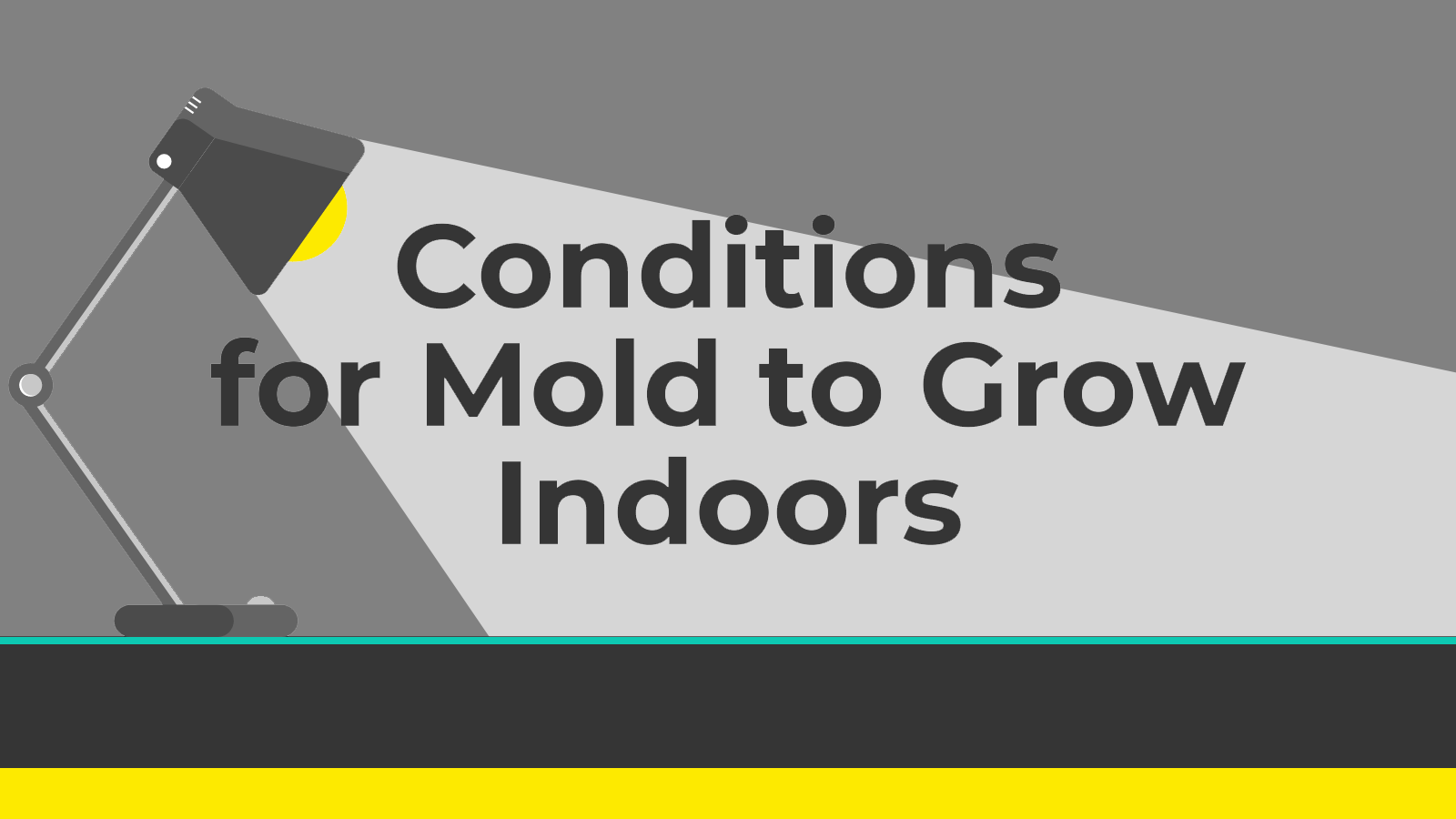Mold can’t grow just anywhere, certain conditions must exist. Learn what those conditions are with the infographic we’ve prepared below.
How is mold remediated when it does grow indoors?
Once mold takes hold and has spread behind invisibly behind walls or visibly in basements, attics, crawlspaces or anywhere else, killing and removing mold becomes that task at hand.
Also See: Best Commercial Dehumidifiers and Best Air Scrubbers
Professionals and consumers remove mold using a combination of products including:
- Air scrubbers
- Commercial dehumidifiers
- Fans (often called air movers or carpet fans)
- Gloves
- Masks
- Ozone generators
- Protective clothing

Conditions for mold to grow indoors
What is mold?
Mold is natural and around us every day. Outdoors, mold plays an important role in nature by aiding in decomposition of organic matter like felled trees and leaves.
Is mold harmful?
Mold is toxic. And, while it can be harmful, without another medical condition at play (such as a lung condition) it cannot kill a person. It can, however, cause health issues.
How are large areas of mold removed from a home or business?
While every situation is unique, every mold remediation involves the following steps:
- Water removal with pumps if the structure is flooded.
- Assessing the level of water damage, how much mold is present and what type of mold it is.
- Using one or more professional mold dehumidifiers to lower the moisture, dampness and humidity.
- Drying carpets and other porous materials with carpet fans and air movers.
- Cleaning up surface mold with mold vacuums and/or cleanup supplies.
- Killing mold with ozone generators.
- Cleaning the air of remaining mold and airborne particulates using air scrubbers.
Conditions
- Mold Spores: The presence of mold spores are the main ingredient necessary for mold to grow.
- Molds create tiny mold spores which themselves cannot grow until the right conditions exist.
- Mold spores are so small they can become airborne and travel as wind moves them freely about.
- Entering buildings through open windows and doors, mold spores settle inside but still aren’t growing – yet.
- Food Source: Mold needs a food source to grow. Indoor spaces contain plenty, unfortunately. Those include but are not limited to:
- Cardboard
- Carpet
- Ceiling tiles
- Cotton
- Drywall
- Insulation
- Paper
- Tile
- Wood
- Dark/Warmth: To grow mold needs a dark environment (void of ultraviolet light) and non-freezing temperatures.
- Temperature must be above 32° F
- UV light can stop mold from growing
- Moisture: A damp, moist environment is where mold thrives and can grow.
- Leaking or compromised pipes are a common source of water entering a building.
- Water often enters structures at the roof, then makes its way down through the structure’s walls.
- Bathrooms and locker rooms are wet places by definition and mold is often found there.
- Bars, kitchens and dishwashing rooms all regularly have water and humidity present.
- Standing water that collects in basements or other rooms creates a suitable home for mold.
- Time: With all other conditions met, mold begins to grow and spread in 24 to 48 hours.

